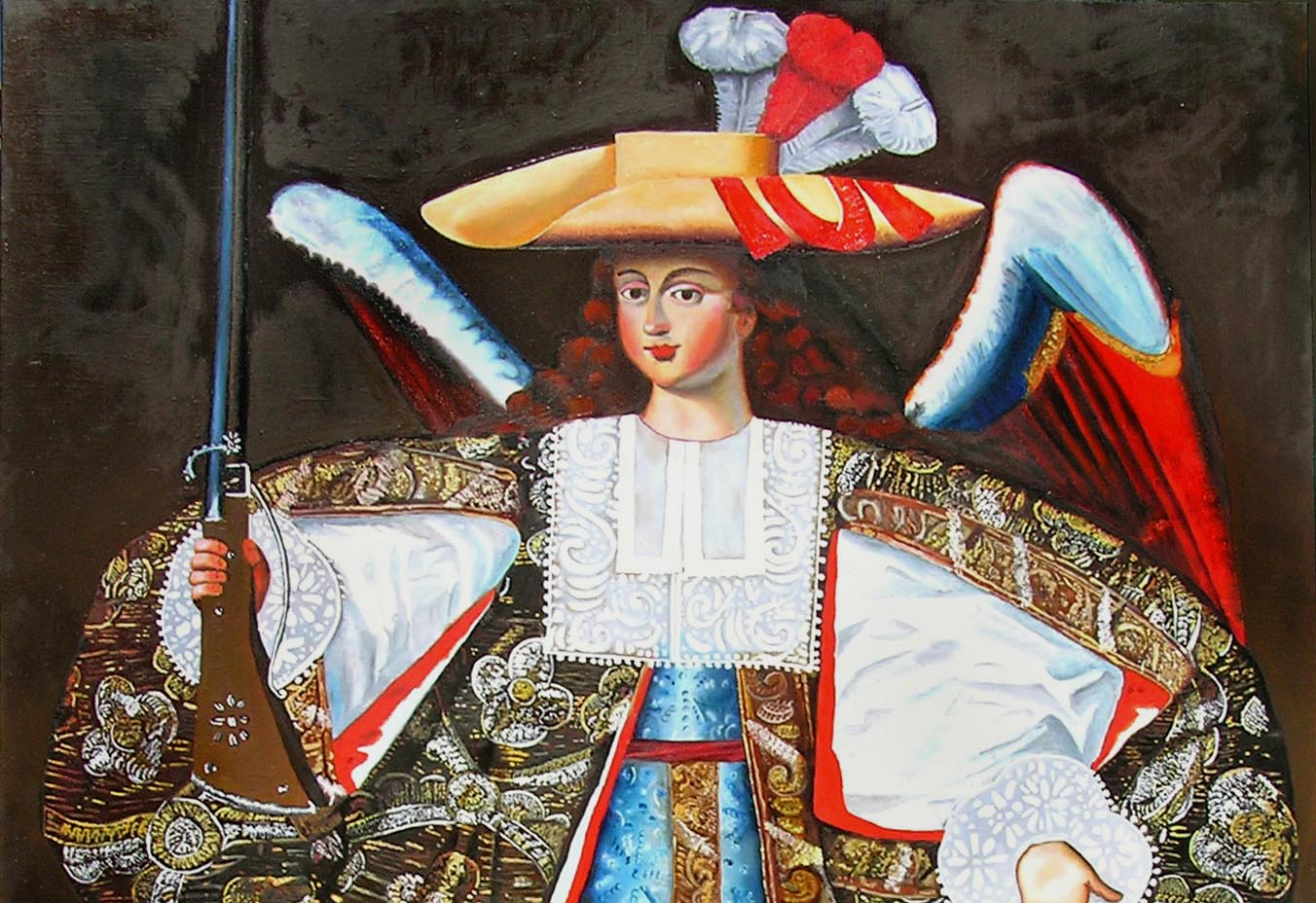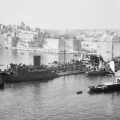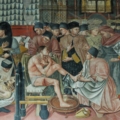If you are planning on walking the Andean baroque route around Cusco, you better get ready to be mind-blown. This Peruvian city was, during colonial times, a center of artistic production like no other. Many of the works created here were distributed all throughout the American continent.
The ángeles arcabuceros (“harquebusier angels”) are one of the most fascinating and unique examples of cultural syncretism in Latin American Viceroyalty art. These enigmatic figures, which emerged in the context of Spanish evangelization of the Americas, stand out for fusing religious, military, and artistic elements from Europe with local Andean traditions and sensibilities.
Angels don’t carry swords anymore
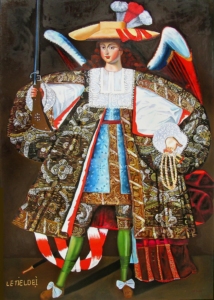
These angels are usually depicted as handsome young men, dressed in fancy clothes that look like early-modern Spanish military clothes – but with distinctive Andean colors and decorative elements. They carry arquebuses, swords, and even flags, showing their military role on Earth as it is in Heaven.
The garments of these harquebusier angels are often decorated with floral motifs, embroidery, and brocade, reflecting the influence of Andean virreinal colonial aesthetics. The faces of the angels are serene and ethereal, as if underscoring their divine, protective character.
A particularly noteworthy aspect is the incorporation of local natural and symbolic elements. Angels may appear surrounded by native fauna and flora, which helps integrate the Andean vision of the natural world with Christian iconography.
Cultural and religious significance
This unique iconographic motif emerged in the 17th century, as a peculiar adaptation of European religious imagery to the conditions and needs of the Americas. Indeed, the origin of these gun-wielding angels could be traced back to the Council of Trent (1545-1563). The Council widely promoted art as a perfect vehicle to teach, disseminate, and strengthen the Catholic faith. European missionaries and artists arriving in Latin America profusely used images to explain complex theological concepts to the indigenous and mestizo population.
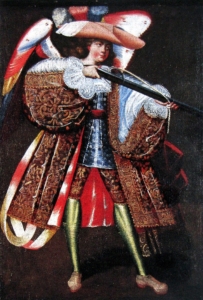
In this context, the ángeles arcabuceros became symbols of divine protection and celestial power, adapted to an iconography that resonated with local circumstances. Harquebusier angels are not only artistic manifestations, but also symbols heavily loaded with religious and cultural significance – that is, these angels served as powerful pedagogical tools. Their presence in churches and chapels helped to convey the idea of divine and omnipotent protection.
Also, these angels show how the different cultures of the Peruvian Viceroyalty blended together. The way these images bring European and Andean elements together shows how local cultures adapted, adopted, and transformed colonial rule. The angels, even though looking like Spanish soldiers, also show a wide array of Andean beliefs and customs. They themselves are a link between two different worlds and traditions.
Outstanding examples
One of the most famous sets of harquebusier angels is found in the church of San Francisco de Paula in Uquía, in Argentina. These paintings, attributed to the famed Escuela de Cusco, are great examples of the technical skill and iconographic richness that define this genre.
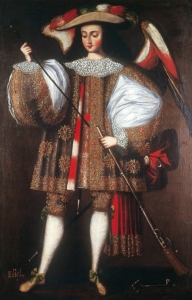
The Uquía angels are impressive not only for their beauty and detail, but also for the way they integrate local and European elements in a unique and harmonious synthesis. They are dressed in the style of the Tercios de Flandes –a Spanish military force from the 17th century, specifically from the time of King Charles II. But their faces are those of Upper Peru natives.
The ángeles arcabuceros are more than an artistic oddity. They are silent witnesses to a complex process of interaction and cultural adaptation. These angels offer us a window into the viceregal world, where faith, art, and identity were all mixed up in surprising and innovative ways.



